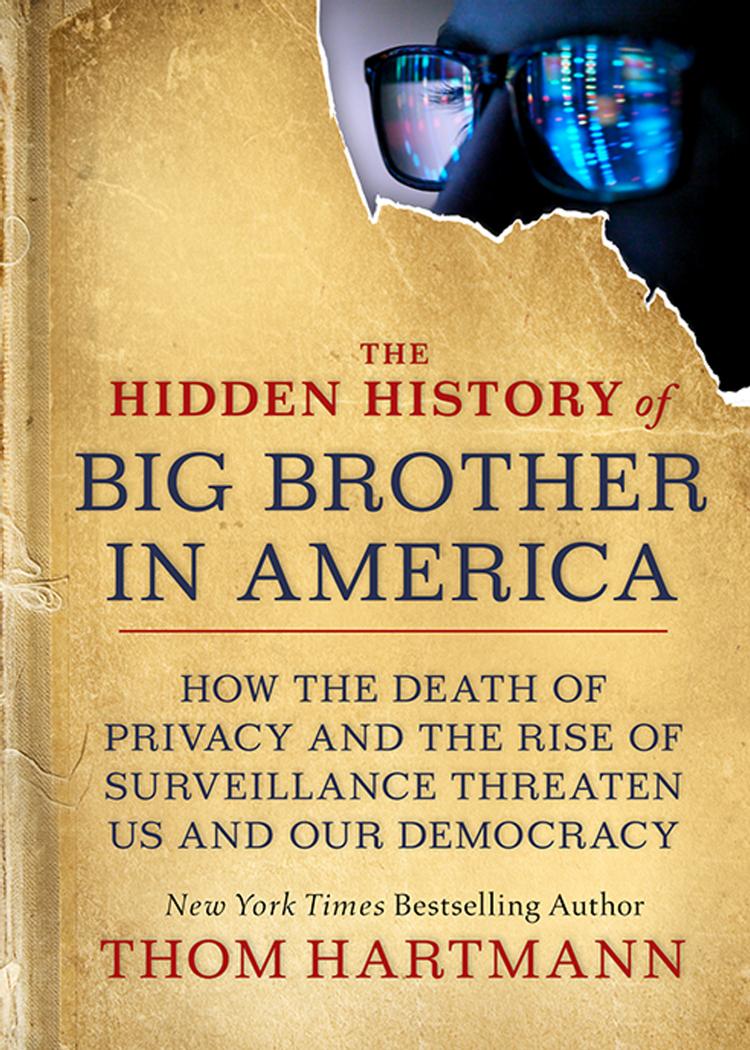The Hidden History of Big Brother in America by Thom Hartmann

Author:Thom Hartmann
Language: eng
Format: epub, pdf
Publisher: Berrett-Koehler Publishers
How Trump Undermined Our Cybersecurity
A few years before the Russian action, right after taking office in 2009, President Obama gave a speech revealing that both his and Senator John McCainâs campaigns had been hacked, as was his personal credit card.
He kicked off a robust new agency within the White House to coordinate cybersecurity across federal agencies so that America wouldnât get caught flat-footed like we were on 9/11 when the FBI and CIA both had essential parts of the Bin Laden puzzle but failed to connect the dots.
J. Michael Daniel was Obamaâs head of the office of the Cybersecurity Coordinator and special assistant to the president, working with a substantial team out of the Eisenhower Executive Office Building next door to the White House. All the bells and alarms from more than 20 US security agencies, from those associated with the military to the FBI, CIA, NSA, and parts of the government that donât even have public names, coordinated with his operation.
They watched with horror as the day before Christmas Eve, the busiest shopping day of 2015, Russia took down Ukraine a year after voters in that country had expelled a Russian-friendly oligarch, Viktor Yanukovych, and replaced him with a Western-friendly president, Oleksandr Turchynov.
And by âtake down,â I mean it almost literally. Kim Zetter told the story of a supervisor at one of Ukraineâs main power substations in Wired: âAll he could do was stare helplessly at his screen while the ghosts in the machine clicked open one breaker after another, eventually taking about 30 substations offline. The attackers didnât stop there, however. They also struck two other power distribution centers at the same time, nearly doubling the number of substations taken offline and leaving more than 230,000 residents in the dark. And as if that werenât enough, they also disabled backup power supplies to two of the three distribution centers, leaving operators themselves stumbling in the dark.â9
It was the second consequential cyberattack (the first being Stuxnet) of one nation-state against another. Prior hacks, mostly by Iran, North Korea, and China, were designed to extort money via ransomware, steal money directly from peopleâs bank accounts or credit cards, or steal product designs and other intellectual properties that could be converted to profit.
But there was no profit motive here, nor in the Stuxnet attack. Both were acts of war.
The United States still had the most powerful cyberweapons in the world, but the Russians were no slouches. For example, back in 2007 when the Estonians (a former Soviet state) removed an old Soviet-era statue from a public square, Russian hackers pulled the internet plug on the entire nation; for a brief while, no traffic got in or out of the country.10
In 2016, the US cyberwarfare equivalents of our nuclear arsenal were hacked from our intelligence agencies (particularly the NSA) and put up for sale on the dark web. One of those cybernukes, named by the NSA EternalBlue, was integrated into a new cyberweapon now known as NotPetya and used a year later, June 27, 2017, against Ukraine.
Download
The Hidden History of Big Brother in America by Thom Hartmann.pdf
This site does not store any files on its server. We only index and link to content provided by other sites. Please contact the content providers to delete copyright contents if any and email us, we'll remove relevant links or contents immediately.
Navigation and Map Reading by K Andrew(5111)
Spare by Prince Harry The Duke of Sussex(5077)
Tuesdays with Morrie by Mitch Albom(4696)
Cracking the GRE Premium Edition with 6 Practice Tests, 2015 (Graduate School Test Preparation) by Princeton Review(4227)
Machine Learning at Scale with H2O by Gregory Keys | David Whiting(4195)
Never by Ken Follett(3799)
Goodbye Paradise(3729)
What It Really Takes to Get Into Ivy League and Other Highly Selective Colleges by Hughes Chuck(3697)
Harry Potter and the Prisoner of Azkaban (Book 3) by J. K. Rowling(3304)
Fairy Tale by Stephen King(3223)
Pledged by Alexandra Robbins(3135)
Kick Ass in College: Highest Rated "How to Study in College" Book | 77 Ninja Study Skills Tips and Career Strategies | Motivational for College Students: A Guerrilla Guide to College Success by Fox Gunnar(3077)
A Dictionary of Sociology by Unknown(3031)
Sapiens and Homo Deus by Yuval Noah Harari(2988)
Reminders of Him: A Novel by Colleen Hoover(2952)
The Social Psychology of Inequality by Unknown(2941)
Graduate Admissions Essays, Fourth Edition: Write Your Way into the Graduate School of Your Choice (Graduate Admissions Essays: Write Your Way Into the) by Asher Donald(2878)
Will by Will Smith(2795)
Zero to Make by David Lang(2727)
